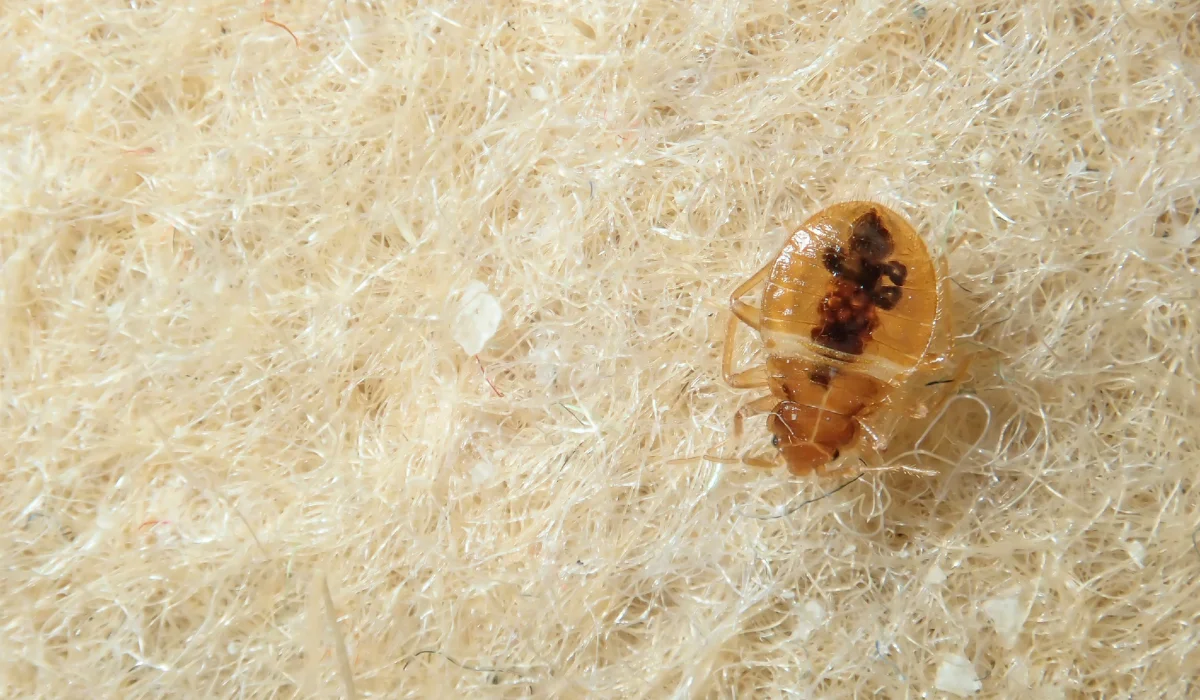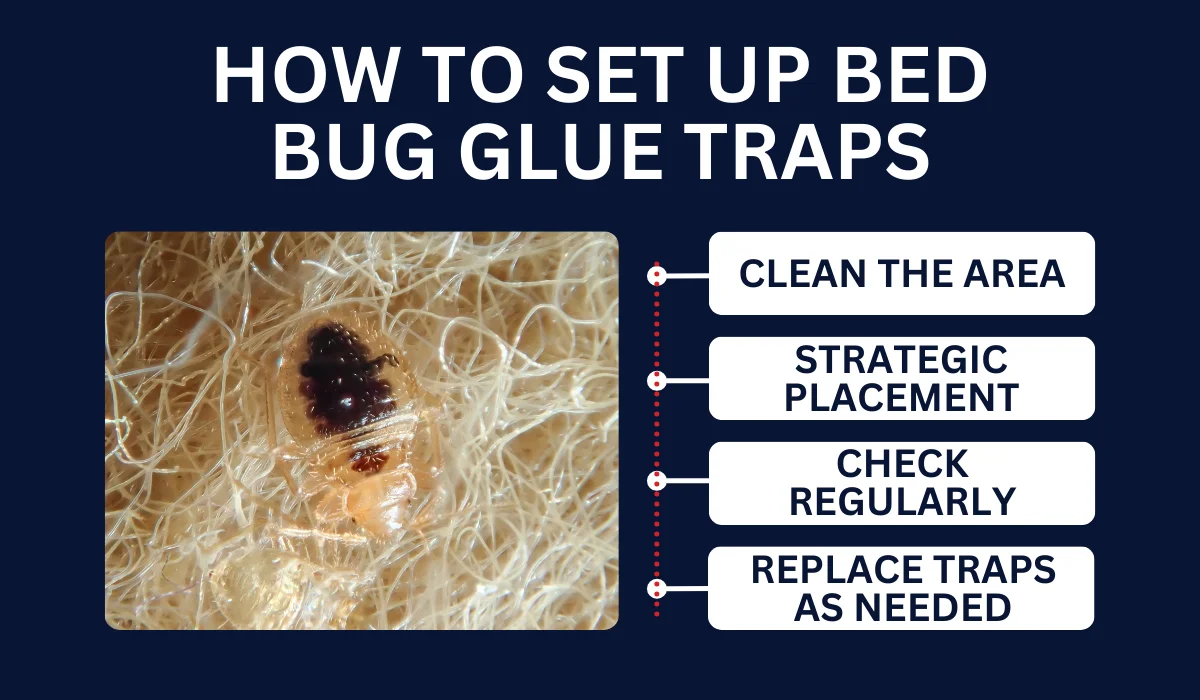
If you’ve discovered bed bugs in your home, you’re not alone. These tiny pests are notorious for their ability to spread quickly and hi
de in crevices. One way to monitor and address a bed bug problem is with glue traps. While glue traps aren’t a standalone solution for a full-blown infestation, they are excellent tools for early detection and monitoring bed bug activity.
Keep reading to learn how to use glue traps effectively and when it might be time to call in a professional pest control service.
Key Takeaways
- Glue traps work by attracting and catching bed bugs using carbon dioxide or pheromones, helping with early detection.
- These traps are non-toxic, safe, and affordable but are best for monitoring bed bugs, not for stopping infestations.
- Placing traps near bed frames, baseboards, and furniture gives the best results when checked and replaced regularly.
- For persistent infestations, professional pest control offers safe, effective treatments with guarantees for complete relief.
HOW DO BED BUG TRAPS WORK?
Glue traps, sometimes called sticky traps, are simple devices coated with a sticky adhesive that traps bed bugs as they walk across the surface.
These traps can also help catch other pests like fleas, roaches, and spiders. They work by using attractants such as carbon dioxide or pheromones to lure bed bugs toward the trap.
WHY USE GLUE TRAPS FOR BED BUGS?
Glue traps are a handy tool for dealing with bed bugs, offering several benefits.
They’re great for early detection, helping you spot a potential problem before it spirals out of control—especially if you suspect bed bugs but haven’t actually seen them.
On top of that, most glue traps are non-toxic and safe to use around pets and kids, so you don’t have to worry about harsh products in your home. They’re also useful for monitoring bed bug activity, showing you where these pests are most active so you can focus your efforts where they’re needed most.
HOW TO SET UP BED BUG GLUE TRAPS

Using bed bug traps to catch these blood-sucking pests is simple, but a few key steps will help you get the best results.
As homeowners, here’s how to set them up so you can start tackling the problem.
1. Clean the Area
Before setting out glue traps, clean the area thoroughly.
Vacuum along baseboards, under furniture, and anywhere bed bugs might be hiding. This removes debris that could block bugs from reaching the traps and eliminates some eggs and nymphs in the process.
Once you’ve finished, empty the vacuum into a sealed bag and throw it out to avoid spreading the problem.
2. Strategic Placement
Where you put the traps matters. Bed bugs often travel along walls or hide near where you sleep. Place traps in these areas:
- Bed frame, bed legs, and bed posts
- Baseboards and crevices
- Box springs and mattresses
- Couches and upholstered furniture
- Near headboards
Think of these as the bug “hotspots.” The goal is to make it easy for them to wander onto the sticky surface as they move about.
3. Check Regularly
Make it a habit to inspect the traps daily.
Check for stuck bed bugs or eggs, as this will give you a better idea of how active the bugs are and where they’re coming from. If you don’t see any activity after a few days, try moving the traps to a different location.
4. Replace Traps as Needed
Glue traps aren’t a one-and-done deal. Over time, they collect dust, dirt, and bugs, making them less sticky. To keep them effective, swap out full or dirty traps every few days.
To prevent the spread of bed bugs, be sure to seal used traps in a plastic bag before tossing them.
WHAT BED BUG GLUE TRAPS CAN (AND CAN’T) DO
While glue traps are effective monitoring tools, they aren’t designed to kill bed bugs or stop the signs of an infestation entirely.
Here’s what to keep in mind:
- Limited Reach: Glue traps can only catch bed bugs that wander into them. They won’t address bugs hiding deep in box springs, baseboards, or wall voids.
- Best for Monitoring: Use glue traps alongside other solutions, such as bed bug interceptor traps, vacuuming, or professional treatments.
- No Guarantee of Elimination: For larger bed bug infestations, glue traps won’t be enough. Professional treatment may be required.
WHEN TO CALL PROFESSIONAL PEST CONTROL SERVICES
If your DIY traps or bed bug killers show significant bed bug activity or if bites persist, it’s time to consult a professional pest control company.
At LaJaunie’s Pest Control, we specialize in bed bug extermination, offering comprehensive treatments that eliminate pests at every stage of life.
For expert help with bed bugs or other pests, contact us today for a free consultation. Don’t let bed bugs keep you up at night—take action now!